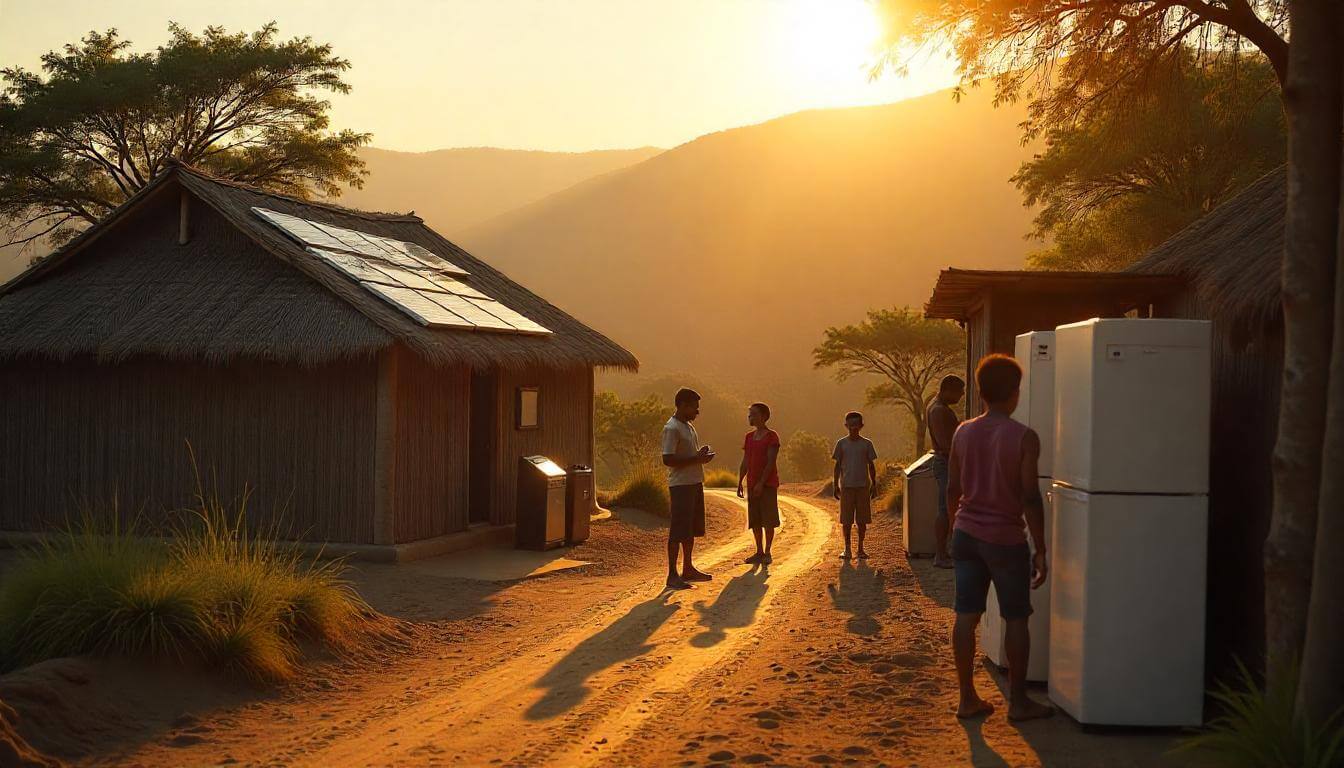Access to reliable and affordable energy remains a critical development challenge for millions globally. Especially in remote communities, geographic isolation often makes connection to centralized power grids economically unfeasible. Many rural areas therefore rely on inefficient, costly, and polluting sources like diesel generators. A recent $55 million investment in a renewable energy startup represents a pivotal step toward closing this energy gap. This substantial funding is specifically dedicated to scaling distributed renewable energy solutions. It is designed to provide sustainable, resilient power to underserved populations. This article examines a significant financial transaction (over $50 million) that is driving rural electrification and fostering community empowerment.
The Challenge of Energy Access in Remote Areas
The lack of consistent electricity severely hinders economic and social development in remote communities. Without electricity, essential services like healthcare, education, and sanitation are difficult to sustain. Furthermore, economic activities are often restricted to daylight hours. Traditional energy sources, typically diesel or kerosene, are not only environmentally harmful but also expensive to transport and maintain in isolated locations. This reliance creates a cycle of poverty and dependence.
Moreover, extending national grids to these areas faces immense infrastructural and financial barriers. The low population density in many remote regions makes conventional grid expansion prohibitively expensive for utilities. Consequently, these communities remain disconnected. There is an urgent need for decentralized, cost-effective solutions that can harness local resources to meet energy demands. This need has driven the rapid growth of distributed renewable energy systems.
The Rise of Distributed Renewable Energy
Distributed energy systems, particularly those utilizing solar and wind power, offer a perfect fit for remote electrification. These systems generate electricity at or near the point of consumption. They eliminate the need for expensive, long-distance transmission infrastructure. Solar photovoltaic (PV) systems, in particular, are proving highly effective due to their modularity and ease of deployment. They transform sunlight into a consistent power supply.
Microgrids and standalone solar home systems (SHS) are central to this transformation. Microgrids are localized power networks that can operate independently of the main grid. They provide reliable power to a cluster of homes or a small village. SHS offer individual households immediate access to lighting and power for basic appliances. Both technologies leverage the decreasing costs of solar panels and battery storage. They provide a scalable pathway to electrification.
The $55 Million Investment: Scaling Solutions
This $55 million investment in a renewable energy startup is focused on accelerating the deployment of these distributed solutions across diverse remote regions. The funding, provided by a consortium of impact investors and development banks, aims to expand the startup’s operational capacity significantly. This transaction demonstrates strong confidence in the commercial viability of off-grid renewable energy models. It also reflects a growing commitment to sustainable development goals.
The capital infusion will be strategically utilized for several key initiatives. It will support the construction of new microgrids and the expansion of solar home system distribution networks. Furthermore, the investment will fund technological research and development. It will also finance innovative business models, such as pay-as-you-go (PAYG) financing. This approach makes clean energy more affordable for low-income communities by spreading the cost over time.
Microgrids: Building Local Energy Independence
Microgrids are transforming remote communities by providing local energy independence. These systems often integrate solar panels, energy storage solutions (batteries), and smart management technologies. They ensure a stable and reliable power supply, mitigating the intermittency inherent in solar or wind power. When coupled with battery storage, microgrids can provide 24/7 electricity, which is essential for modern life.
Reliable electricity significantly enhances community resilience. Unlike centralized grids, which are vulnerable to large-scale failures or extreme weather events, microgrids can “island” themselves. They continue operating independently during outages. This capability is particularly vital for maintaining critical services. It ensures power for health clinics and water purification systems. A key outcome of this renewable energy startup investment is the strengthening of local energy infrastructure.
The Economic and Social Transformation
The impact of electrification on remote communities is profound and multifaceted. Economically, access to reliable power stimulates local entrepreneurship. It enables small businesses to extend operating hours. It also facilitates the use of productivity-enhancing machinery. This leads to job creation and increased income levels. Furthermore, electrification supports modern agriculture. It powers irrigation systems and cold storage for perishable goods.
Socially, the benefits are equally significant. Consistent lighting allows students to study after dark, improving educational outcomes. Access to electricity powers medical equipment and telecommunications. This enhances healthcare services and improves connectivity. By providing sustainable energy, this renewable energy startup is not just installing solar panels; it is laying the foundation for long-term community development and prosperity.
Overcoming Challenges: Financing and Sustainability
While the benefits are clear, deploying renewable energy in remote areas faces specific challenges. High upfront installation costs for solar systems and microgrids are often a significant hurdle. Furthermore, local capacity for maintenance and technical support needs to be developed. Ensuring the long-term sustainability of these systems requires careful planning and community engagement.
The $55 million investment addresses these issues through targeted strategies. The deployment of PAYG models reduces the initial financial burden on households. It makes clean energy accessible to those without access to traditional credit. Additionally, the startup is focusing on training local technicians. This ensures the systems can be maintained by community members. This approach fosters a sense of ownership. It guarantees the longevity of the energy infrastructure.
The Future of Rural Electrification
The future of rural electrification is undeniably decentralized and renewable. As the costs of solar and wind technologies continue to fall, distributed systems are becoming increasingly competitive with traditional energy sources. Innovations in battery technology are further enhancing the reliability of microgrids. These advancements make sustainable energy access more attainable than ever before.
This $55 million renewable energy startup is a strong example of how private capital can play a crucial role in achieving global energy goals. Continued investment in this sector will be essential for scaling these solutions globally. It will also ensure that no community is left behind in the transition to a clean energy future. The success of these initiatives provides a powerful blueprint for future efforts in sustainable development.
Conclusion: A Brighter Future Through Clean Energy
The $55 million investment in this renewable energy startup marks a transformative moment for remote communities. By leveraging solar and wind technology, this funding is providing reliable, clean power to areas that have historically been overlooked. It is driving economic growth, improving health outcomes, and enhancing educational opportunities. This commitment to sustainable energy access demonstrates a clear path toward a more equitable and resilient global energy system. The initiative underscores the power of targeted investment to create a brighter, cleaner future for all.

 The $55M Renewable Energy Startup: Powering Remote Communities">
The $55M Renewable Energy Startup: Powering Remote Communities">

التعليقات